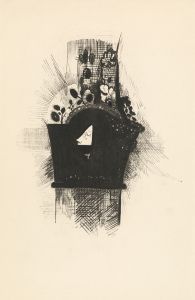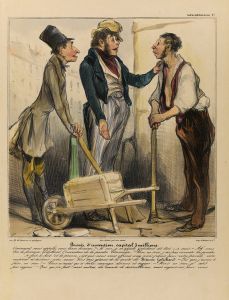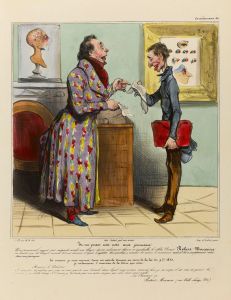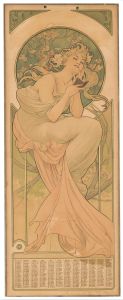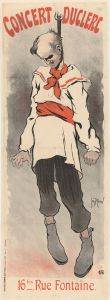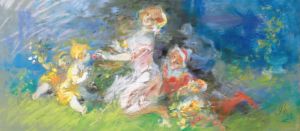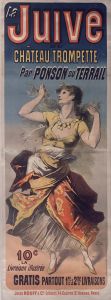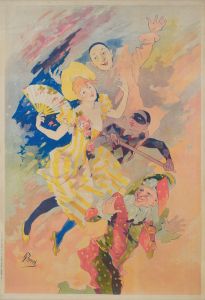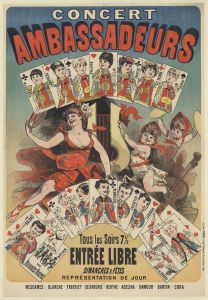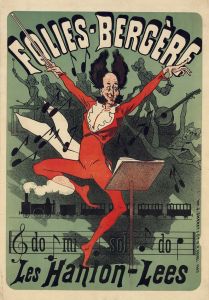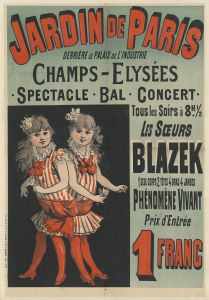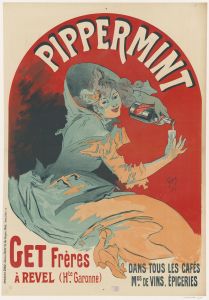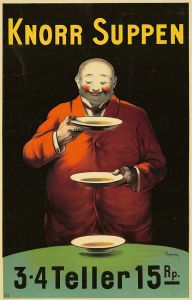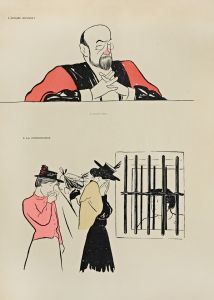
Aimons Nous
A hand-painted replica of Jules Chéret’s masterpiece Aimons Nous, meticulously crafted by professional artists to capture the true essence of the original. Each piece is created with museum-quality canvas and rare mineral pigments, carefully painted by experienced artists with delicate brushstrokes and rich, layered colors to perfectly recreate the texture of the original artwork. Unlike machine-printed reproductions, this hand-painted version brings the painting to life, infused with the artist’s emotions and skill in every stroke. Whether for personal collection or home decoration, it instantly elevates the artistic atmosphere of any space.
Jules Chéret, a pivotal figure in the development of poster art, is renowned for his vibrant and dynamic works that helped shape the visual culture of the late 19th century. One of his notable works is "Aimons Nous," a piece that exemplifies his innovative approach to lithography and poster design. Chéret, often referred to as the "father of the modern poster," was instrumental in transforming the streets of Paris into a lively gallery of colorful advertisements.
Born in Paris in 1836, Chéret was trained in lithography from a young age. He spent several years in London, where he was influenced by the burgeoning advertising industry. Upon returning to France, he applied these influences to his work, creating posters that were not only advertisements but also works of art in their own right. His posters often featured lively, joyous scenes with a focus on movement and color, capturing the spirit of the Belle Époque.
"Aimons Nous" is a quintessential example of Chéret's style. The title, which translates to "Let Us Love," suggests themes of romance and affection, common motifs in Chéret's work. The poster likely features his characteristic use of bright colors and fluid lines, depicting figures in motion, often women, who were central to his compositions. Chéret's women, sometimes referred to as "Chérettes," were depicted as joyful and liberated, embodying the modernity and optimism of the era.
Chéret's technique involved the use of lithography, a method that allowed for the mass production of posters with rich, vibrant colors. This was a significant advancement from earlier methods, which were limited in color and detail. His mastery of this technique enabled him to produce posters that were not only eye-catching but also artistically sophisticated.
The impact of Chéret's work extended beyond the realm of advertising. His posters were collected and admired as art pieces, influencing a generation of artists and designers. The vivid imagery and innovative use of color and composition in works like "Aimons Nous" contributed to the development of Art Nouveau, a movement characterized by its decorative style and organic forms.
Chéret's legacy is evident in the way posters are perceived today—not merely as commercial tools but as an art form. His ability to blend art and commerce paved the way for future artists and designers, establishing a new visual language that continues to resonate in contemporary design.
While specific details about the content and context of "Aimons Nous" might be limited, the work remains a testament to Chéret's influence and the transformative power of his art. His posters, including "Aimons Nous," encapsulate the joie de vivre of the Belle Époque and continue to be celebrated for their artistic and historical significance.





